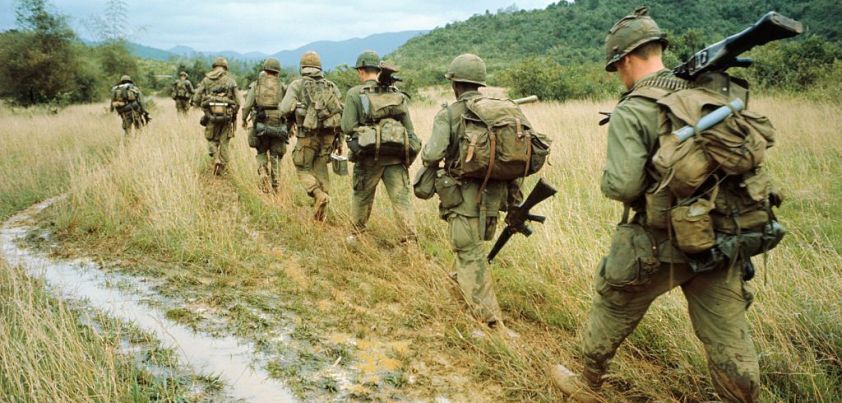 The strength of this Vietnam War memoir by Tim O’Brien is the matter-of-fact way the life of the soldiers (“grunts”) is portrayed. Although the military and survival equipment carried by the men is listed, the major theme of the story is the emotional burdens they carried – both those the men brought to the war, and those they took on during its course. First Lieutenant Jimmy Cross learns an important lesson: in order to do your duty and survive the war, you need to find a way to let go of these. Other themes: war, love, individual and collective responsibility. More…
The strength of this Vietnam War memoir by Tim O’Brien is the matter-of-fact way the life of the soldiers (“grunts”) is portrayed. Although the military and survival equipment carried by the men is listed, the major theme of the story is the emotional burdens they carried – both those the men brought to the war, and those they took on during its course. First Lieutenant Jimmy Cross learns an important lesson: in order to do your duty and survive the war, you need to find a way to let go of these. Other themes: war, love, individual and collective responsibility. More…
Archives
Victoria and Her Kimono
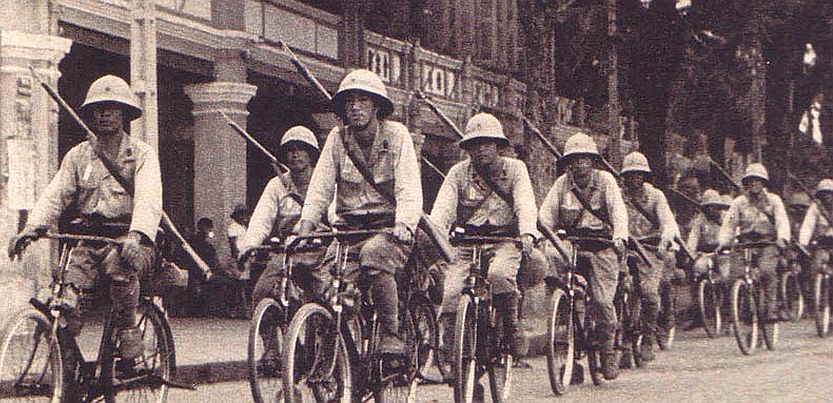 This story by M. Shanmughalingam is in two parts. The first is a humorous description of pre-World War 2 goings-on at one of Kuala Lumpur’s most prestigious secondary schools. Told from the point of view of an “old school” disciplinarian English teacher, it has a Monty Python-like ring to it. The second deals with the brutality and privation associated with Japanese occupation and how, thanks to a home-made kimono and a few words of Japanese, the Tigress of Asia (the teacher’s wife) saves his life. Themes include colonialism, the power of language, suffering, courage, resilience. More…
This story by M. Shanmughalingam is in two parts. The first is a humorous description of pre-World War 2 goings-on at one of Kuala Lumpur’s most prestigious secondary schools. Told from the point of view of an “old school” disciplinarian English teacher, it has a Monty Python-like ring to it. The second deals with the brutality and privation associated with Japanese occupation and how, thanks to a home-made kimono and a few words of Japanese, the Tigress of Asia (the teacher’s wife) saves his life. Themes include colonialism, the power of language, suffering, courage, resilience. More…
The Sniper
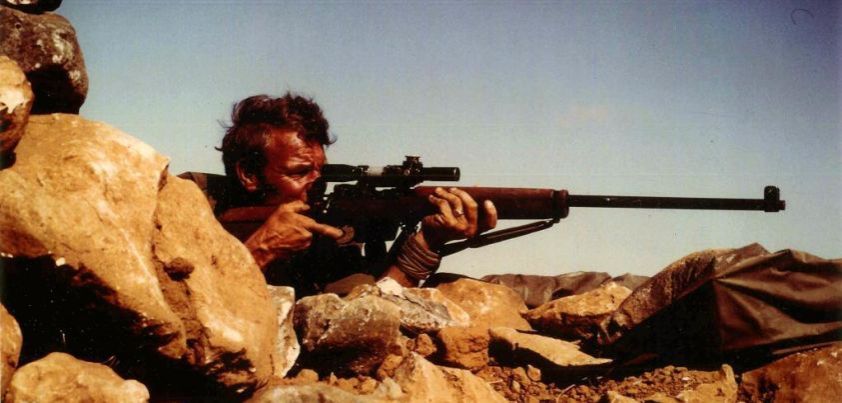 Some argue that civil wars are the worst form of warfare because they can set friend against friend and family against family. This story by Liam O’Flaherty takes place during the Irish Civil War of 1922/23. After an IRA sniper with the cold gleam of the fanatic in his eyes kills an enemy sniper, he goes to see if he knew the man. It is tempting to feel sorry as he turns over the body. That is until you remember the unarmed woman he had just shot in cold blood. Themes include war, divisiveness, duty, survival, isolation, brutality, guilt. More…
Some argue that civil wars are the worst form of warfare because they can set friend against friend and family against family. This story by Liam O’Flaherty takes place during the Irish Civil War of 1922/23. After an IRA sniper with the cold gleam of the fanatic in his eyes kills an enemy sniper, he goes to see if he knew the man. It is tempting to feel sorry as he turns over the body. That is until you remember the unarmed woman he had just shot in cold blood. Themes include war, divisiveness, duty, survival, isolation, brutality, guilt. More…
The Pugilist at Rest
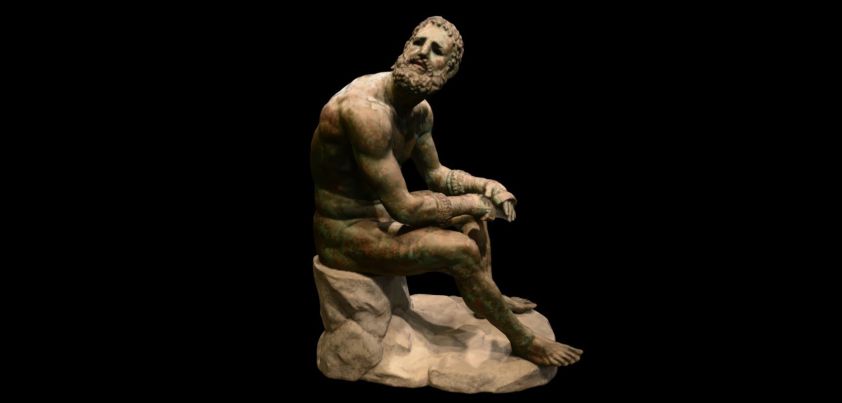 This story by Thom Jones is unusual in that the protagonist, a reflective American Marine, freely admits committing unspeakable war crimes (and getting medals for them) after the rest of his reconnaissance patrol was slaughtered in Vietnam. Post-war PTSD leads to excessive drinking and a vicious boxing match in which he suffers serious brain damage. He must now choose between a life of seizures in a drug-induced haze, or risky surgery that could turn him into a vegetable. Themes include friendship, masculinity, the brutality of war, morality, violence and suffering, choices and consequences, philosophy and art. More…
This story by Thom Jones is unusual in that the protagonist, a reflective American Marine, freely admits committing unspeakable war crimes (and getting medals for them) after the rest of his reconnaissance patrol was slaughtered in Vietnam. Post-war PTSD leads to excessive drinking and a vicious boxing match in which he suffers serious brain damage. He must now choose between a life of seizures in a drug-induced haze, or risky surgery that could turn him into a vegetable. Themes include friendship, masculinity, the brutality of war, morality, violence and suffering, choices and consequences, philosophy and art. More…
Naming the Names
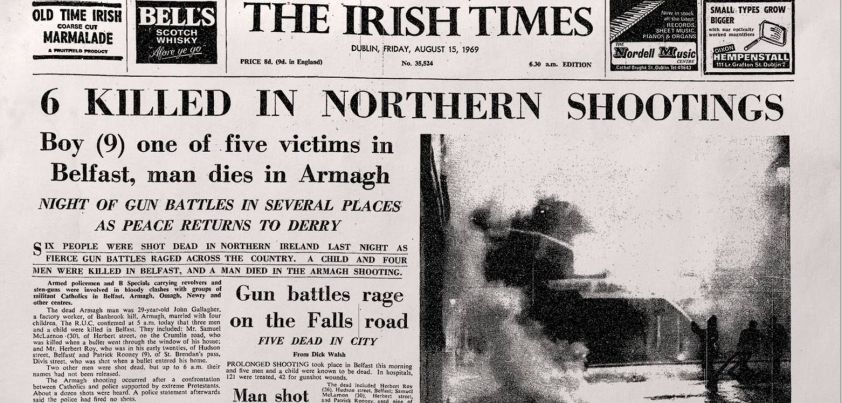 Set during the Irish Troubles, the major themes of his story by Anne Devlin are love, loyalty and betrayal. Other themes include identity, the cyclical nature of violence, urban change/devastation, taking responsibility for one’s actions, and the humanization of terrorism. The plot is non-linear, with regular flashbacks to earlier times. An insecure woman who has been indoctrinated in the Republican cause since childhood joins the IRA. She plays a minor role until a decision is made to target a prominent British official, and finds herself perfectly placed to lure his son (who is also her lover!) into a deadly trap.
Set during the Irish Troubles, the major themes of his story by Anne Devlin are love, loyalty and betrayal. Other themes include identity, the cyclical nature of violence, urban change/devastation, taking responsibility for one’s actions, and the humanization of terrorism. The plot is non-linear, with regular flashbacks to earlier times. An insecure woman who has been indoctrinated in the Republican cause since childhood joins the IRA. She plays a minor role until a decision is made to target a prominent British official, and finds herself perfectly placed to lure his son (who is also her lover!) into a deadly trap.
More…
In Another Country
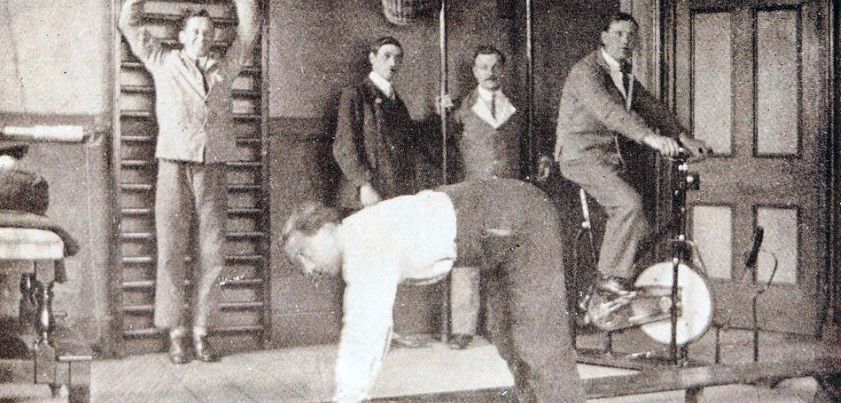 Set during World War 1, the major theme of his story by Ernest Hemingway is courage: courage to face an enemy in war, and courage to try to rebuild one’s life after being badly injured or suffering a major setback. A wounded American, thought to be Hemingway’s alter ego Nick Adams, visits a Milan hospital every day for exercises to rehabilitate a wounded knee. He shares his fears about returning to the front, and his relationship and experiences with five Italian soldiers undergoing treatment. Other themes: dealing with disability and loss, fear of death, camaraderie, dignity vs. bravado, alienation, loneliness. More…
Set during World War 1, the major theme of his story by Ernest Hemingway is courage: courage to face an enemy in war, and courage to try to rebuild one’s life after being badly injured or suffering a major setback. A wounded American, thought to be Hemingway’s alter ego Nick Adams, visits a Milan hospital every day for exercises to rehabilitate a wounded knee. He shares his fears about returning to the front, and his relationship and experiences with five Italian soldiers undergoing treatment. Other themes: dealing with disability and loss, fear of death, camaraderie, dignity vs. bravado, alienation, loneliness. More…
An Occurrence at Owl Creek Bridge
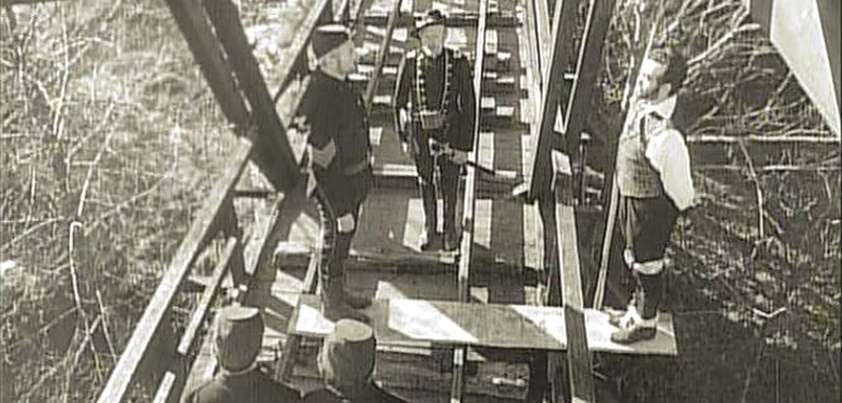 This Ambrose Bierce story contains some of the best descriptive language in American literature… so much so that most people will need to read the passage at least twice in order to properly appreciate it. All I can say about the plot without spoiling the experience for those who haven’t read it is that the surprise ending usually sticks in reader’s minds for some time. The major themes: sense of duty; love and sacrifice; the brutality of war; confronting death; near-death experiences; and time (the length of a moment) as reflected in the personification metaphor time stood still. More…
This Ambrose Bierce story contains some of the best descriptive language in American literature… so much so that most people will need to read the passage at least twice in order to properly appreciate it. All I can say about the plot without spoiling the experience for those who haven’t read it is that the surprise ending usually sticks in reader’s minds for some time. The major themes: sense of duty; love and sacrifice; the brutality of war; confronting death; near-death experiences; and time (the length of a moment) as reflected in the personification metaphor time stood still. More…
The Drummer Boy of Shiloh
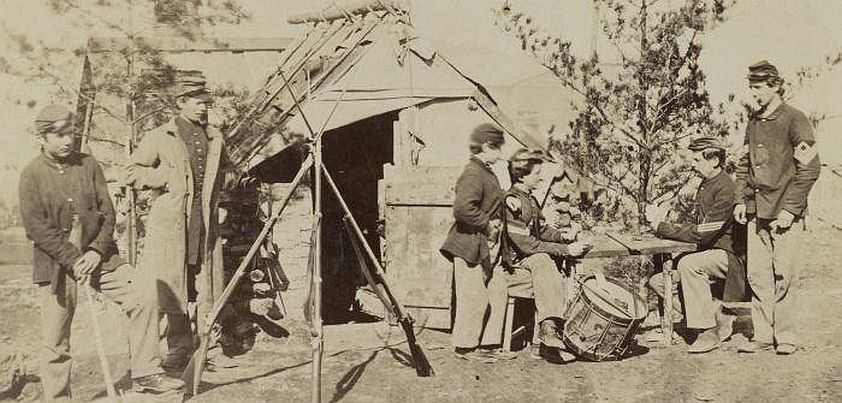 This story by Ray Bradbury packs a lot of raw emotion, even though the “action” is limited to a single conversation that takes place over the course of no more than half an hour. A fourteen-year-old drummer boy who must march into battle with no gun or means of protecting himself is a bundle of nerves on the night before his first encounter with the enemy. An inspirational talk with his commanding general teaches him that his drum may be one of the most effective weapons in the army. Themes include isolation and loneliness, empathy, duty, fear, courage, death, honor. More…
This story by Ray Bradbury packs a lot of raw emotion, even though the “action” is limited to a single conversation that takes place over the course of no more than half an hour. A fourteen-year-old drummer boy who must march into battle with no gun or means of protecting himself is a bundle of nerves on the night before his first encounter with the enemy. An inspirational talk with his commanding general teaches him that his drum may be one of the most effective weapons in the army. Themes include isolation and loneliness, empathy, duty, fear, courage, death, honor. More…
Luck
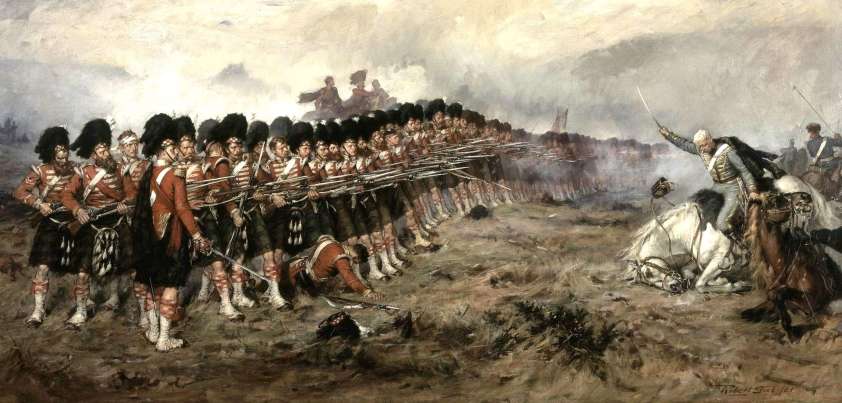 As the name implies, the major theme of Luck by Samuel Clemens (aka Mark Twain) is just that — Luck! Its main message is that good fortune can result in the most unlikely people achieving greatness. Other themes include envy and injustice. The clergyman envies Lieutenant General Lord Arthur Scoresby, V.C., K.C.B., etc. for his successes in life… especially on the battlefield where, in reality, he didn’t seem to know back from forwards and right from left. There is also a sense of injustice in that the General appears to show no appreciation for the clergyman’s role in his success. More…
As the name implies, the major theme of Luck by Samuel Clemens (aka Mark Twain) is just that — Luck! Its main message is that good fortune can result in the most unlikely people achieving greatness. Other themes include envy and injustice. The clergyman envies Lieutenant General Lord Arthur Scoresby, V.C., K.C.B., etc. for his successes in life… especially on the battlefield where, in reality, he didn’t seem to know back from forwards and right from left. There is also a sense of injustice in that the General appears to show no appreciation for the clergyman’s role in his success. More…
Guests of the Nation
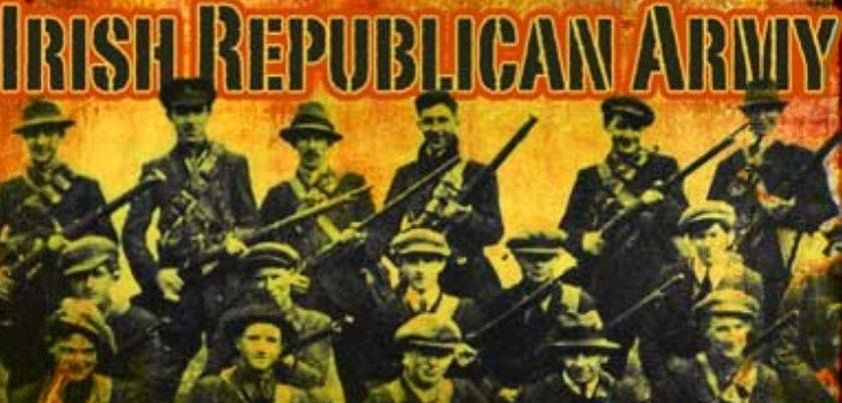 This story by Frank O’Connor takes place during, or possibly shortly after, the Irish War of Independence of 1919-1921. Two young Irishmen become friends with two English ‘prisoners’ they are guarding. That is until a cold-hearted officer orders them to take part in the execution of the two men. As one notes at the end of the story: And anything that happened to me afterwards, I never felt the same about again. Themes: friendship, religion vs. atheism, choices and consequences, aspects of war (duty vs. morality, brutality, the humanity of enemy combatants, possible long-term psychological effects). More…
This story by Frank O’Connor takes place during, or possibly shortly after, the Irish War of Independence of 1919-1921. Two young Irishmen become friends with two English ‘prisoners’ they are guarding. That is until a cold-hearted officer orders them to take part in the execution of the two men. As one notes at the end of the story: And anything that happened to me afterwards, I never felt the same about again. Themes: friendship, religion vs. atheism, choices and consequences, aspects of war (duty vs. morality, brutality, the humanity of enemy combatants, possible long-term psychological effects). More…
Civil Peace
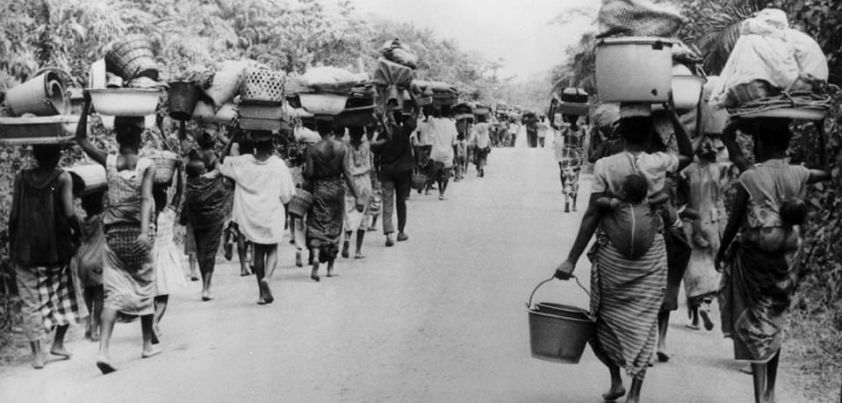 On the surface, Chinua Achebe’s Civil Peace appears to be a light-hearted take on the challenges faced by a family in the aftermath of the Nigerian Civil War. In reality, it deals with the much darker themes of corruption, devastation and lawlessness, as well as the positive themes of being thankful for what you have, finding opportunity in adversity, hard work, family unity, and the resilience of the human spirit in times of extreme difficulty. Another theme, common in the third-world and reflected in the frequently repeated Nothing puzzels God!, is that everything that happens is part of God’s plan. More…
On the surface, Chinua Achebe’s Civil Peace appears to be a light-hearted take on the challenges faced by a family in the aftermath of the Nigerian Civil War. In reality, it deals with the much darker themes of corruption, devastation and lawlessness, as well as the positive themes of being thankful for what you have, finding opportunity in adversity, hard work, family unity, and the resilience of the human spirit in times of extreme difficulty. Another theme, common in the third-world and reflected in the frequently repeated Nothing puzzels God!, is that everything that happens is part of God’s plan. More…
Yellow Moepels
 In this story by Herman Bosman, a young a young farmer riding off to fight the British during the short First Boer War promises the girl he is engaged to that he will be home when the moepel fruit are ripe (yellow). The girl visits a native witch-doctor who tells her the same thing. We learned earlier in the story that witch-doctors can only tell you the things that don’t matter in your life. There is something more important in the girl’s future that the witch-doctor neglected to divulge. Themes: love, superstition, war, “bravery”, memory, racism. More…
In this story by Herman Bosman, a young a young farmer riding off to fight the British during the short First Boer War promises the girl he is engaged to that he will be home when the moepel fruit are ripe (yellow). The girl visits a native witch-doctor who tells her the same thing. We learned earlier in the story that witch-doctors can only tell you the things that don’t matter in your life. There is something more important in the girl’s future that the witch-doctor neglected to divulge. Themes: love, superstition, war, “bravery”, memory, racism. More…
Where Have You Gone, Charming Billy?
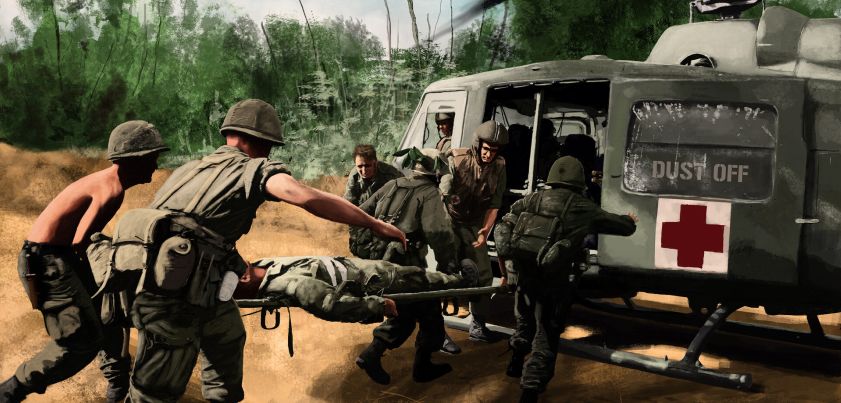 Private First Class Paul Berlin faces three antagonists in this story by Vietnam veteran Tim O’Brien: the enemy (it is after all a war story!), his fellow soldiers (he will be punished and/or branded as a coward if he fails in his duty), and himself (the ability to control his fear). Although the major theme is clearly fear, the story also highlights the naivety and youthful innocence of many of those sent to fight in the war. Fear is presented as two-dimensional. While giving in to it can have grave consequences, facing and harnessing it can save a soldier’s life. More…
Private First Class Paul Berlin faces three antagonists in this story by Vietnam veteran Tim O’Brien: the enemy (it is after all a war story!), his fellow soldiers (he will be punished and/or branded as a coward if he fails in his duty), and himself (the ability to control his fear). Although the major theme is clearly fear, the story also highlights the naivety and youthful innocence of many of those sent to fight in the war. Fear is presented as two-dimensional. While giving in to it can have grave consequences, facing and harnessing it can save a soldier’s life. More…
Two Friends
 Set during the four month the siege of Paris of 1870-1871, this story by Guy de Maupassant stereotypes (from a French perspective) the patriotism and valour of two Frenchmen and the barbaric brutality of the Prussian (German) soldiers surrounding the city. After a few drinks, two friends on opposite sides of the political spectrum (one a monarchist, the other a republican) set off to escape the deprivation and boredom of the besieged city by going fishing in the “no-man’s land” between the two armies. Themes: friendship, loyalty, patriotism, courage, the brutality of war. More…
Set during the four month the siege of Paris of 1870-1871, this story by Guy de Maupassant stereotypes (from a French perspective) the patriotism and valour of two Frenchmen and the barbaric brutality of the Prussian (German) soldiers surrounding the city. After a few drinks, two friends on opposite sides of the political spectrum (one a monarchist, the other a republican) set off to escape the deprivation and boredom of the besieged city by going fishing in the “no-man’s land” between the two armies. Themes: friendship, loyalty, patriotism, courage, the brutality of war. More…
War
 If you are looking for an action-packed war story, this is not for you. Set in Italy during World War One, this story by Luigi Pirandello is a dialogue-packed discussion among the parents of men who are going or have gone off to war about its impact on their lives. The central themes are patriotism, duty, fear, sacrifice and grief. The climax comes when a man who claimed to be above grief because his son died honorably for his country breaks into tears when forced to confront the fact that the boy really is dead and gone forever. More…
If you are looking for an action-packed war story, this is not for you. Set in Italy during World War One, this story by Luigi Pirandello is a dialogue-packed discussion among the parents of men who are going or have gone off to war about its impact on their lives. The central themes are patriotism, duty, fear, sacrifice and grief. The climax comes when a man who claimed to be above grief because his son died honorably for his country breaks into tears when forced to confront the fact that the boy really is dead and gone forever. More…
Exchanging Glances
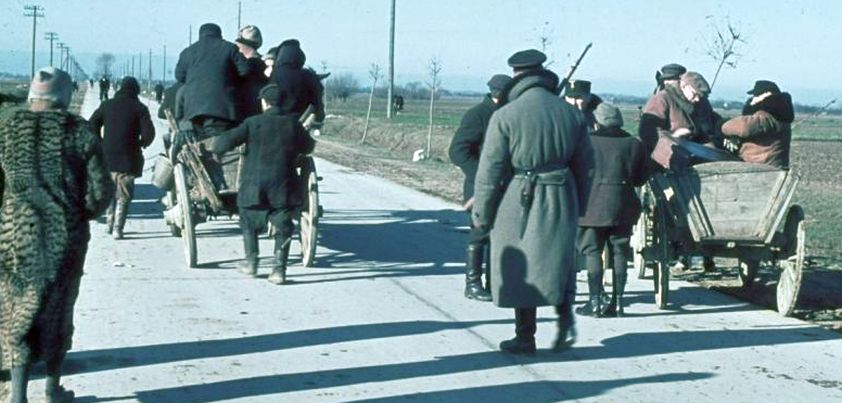 This autobiographical story by Christa Wolf provides a unique perspective on the final days of World War II, told from the viewpoint of a middle-aged German woman looking back on her time as a teenager fleeing the Russians with her family. Part of a column of refugees, she recounts being strafed by American fighter planes, learning of Hitler’s death, encountering a retreating Wehrmacht unit, and coming face-to-face with liberated concentration camp survivors. Ironically, some confronting experiences on reaching the “safety” of American lines leave her in tears. Themes: war, the vagaries of memory/selective amnesia, changing perspectives, dislocation, loss, death. More…
This autobiographical story by Christa Wolf provides a unique perspective on the final days of World War II, told from the viewpoint of a middle-aged German woman looking back on her time as a teenager fleeing the Russians with her family. Part of a column of refugees, she recounts being strafed by American fighter planes, learning of Hitler’s death, encountering a retreating Wehrmacht unit, and coming face-to-face with liberated concentration camp survivors. Ironically, some confronting experiences on reaching the “safety” of American lines leave her in tears. Themes: war, the vagaries of memory/selective amnesia, changing perspectives, dislocation, loss, death. More…
Crossing the Zbrucz / My First Goose / Salt
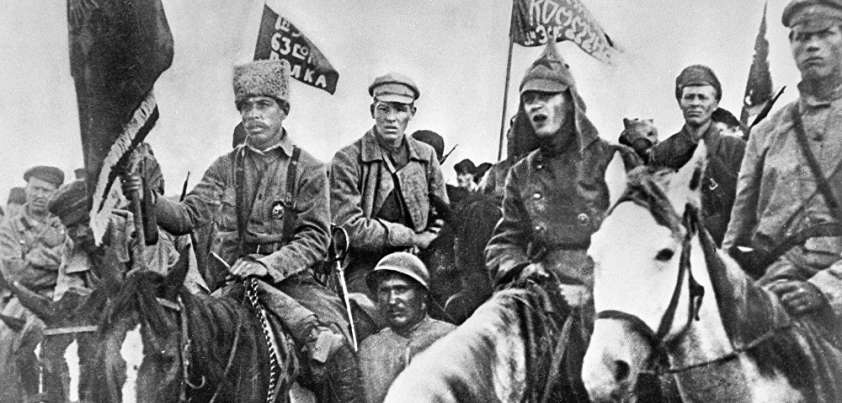 Today we have three stories (Crossing the Zbrucz, My First Goose and Salt) from Red Cavalry, a collection of edited entries from the war diary of Russian author Isaac Babel. The stories reflect his time as a journalist / propagandist attached to the First Cavalry unit of the Red Army during the Polish-Soviet War of 1920. These are not typical war stories involving great battles and inspiring heroes. Instead, the book provides a graphic insight into the human impact of the war on those fighting it, as well as the casualties and brutalities inflicted by both sides on innocent civilians. More…
Today we have three stories (Crossing the Zbrucz, My First Goose and Salt) from Red Cavalry, a collection of edited entries from the war diary of Russian author Isaac Babel. The stories reflect his time as a journalist / propagandist attached to the First Cavalry unit of the Red Army during the Polish-Soviet War of 1920. These are not typical war stories involving great battles and inspiring heroes. Instead, the book provides a graphic insight into the human impact of the war on those fighting it, as well as the casualties and brutalities inflicted by both sides on innocent civilians. More…
Boule de Suif / Ball of Fat
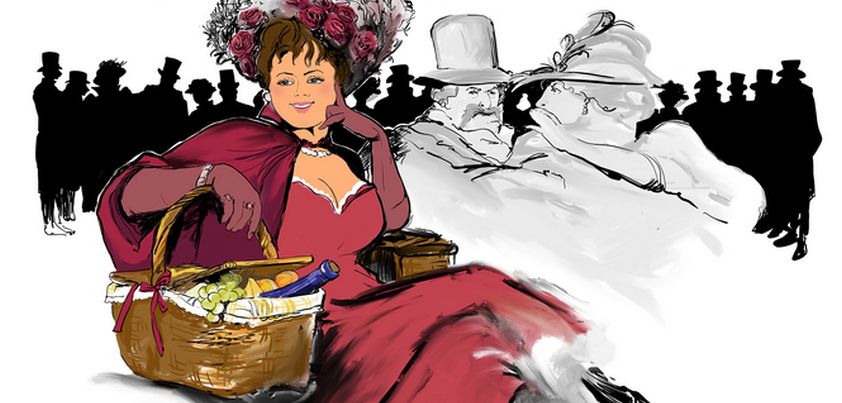 Regarded as one of Guy de Maupassant’s greatest works, this story explores the interactions between a prostitute with the unfortunate nickname Boule de Suif (Ball of Fat) and nine other coach passengers fleeing the Franco-Prussian War. Her fellow travelers comprise a cross-section of “respectable” French society: politics, business, the nobility and religion. Maupassant’s sad message about nineteenth-century France is that no matter what shows of kindness or sacrifices people of the lower classes make, they are unlikely to be treated with respect and dignity by those of higher social standing. Themes: social class, patriotism, manipulation, exploitation, sacrifice/moral compromise, ingratitude, hypocrisy. More…
Regarded as one of Guy de Maupassant’s greatest works, this story explores the interactions between a prostitute with the unfortunate nickname Boule de Suif (Ball of Fat) and nine other coach passengers fleeing the Franco-Prussian War. Her fellow travelers comprise a cross-section of “respectable” French society: politics, business, the nobility and religion. Maupassant’s sad message about nineteenth-century France is that no matter what shows of kindness or sacrifices people of the lower classes make, they are unlikely to be treated with respect and dignity by those of higher social standing. Themes: social class, patriotism, manipulation, exploitation, sacrifice/moral compromise, ingratitude, hypocrisy. More…
The Canal
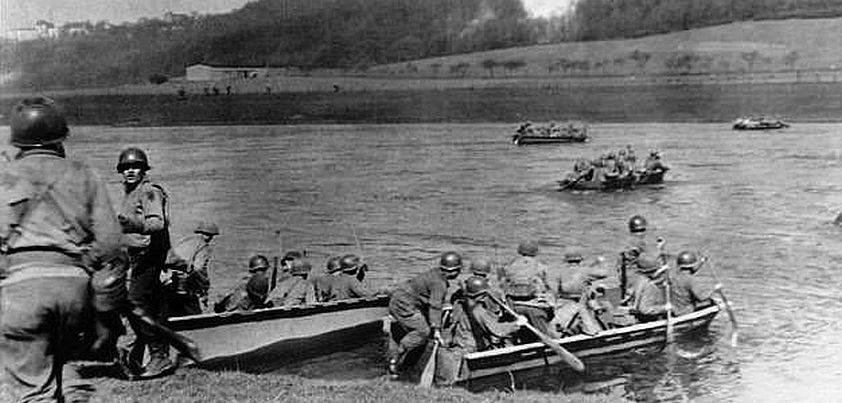 In this story by Richard Yates, two men at a cocktail party learn that their army divisions fought alongside each other during a bloody World War 2 canal crossing. One boasts about his role in the operation; the other is reluctant to share information. As their wives compete to build up their respective husband’s roles in the fighting, readers learn that although the second man performed equally as bravely, due to some mistakes along the way he would rather forget what happened. Themes include memory, conceit, gender roles, glorification of war vs. the reality of war, self-esteem, humiliation and shame. More…
In this story by Richard Yates, two men at a cocktail party learn that their army divisions fought alongside each other during a bloody World War 2 canal crossing. One boasts about his role in the operation; the other is reluctant to share information. As their wives compete to build up their respective husband’s roles in the fighting, readers learn that although the second man performed equally as bravely, due to some mistakes along the way he would rather forget what happened. Themes include memory, conceit, gender roles, glorification of war vs. the reality of war, self-esteem, humiliation and shame. More…
Beware of the Dog
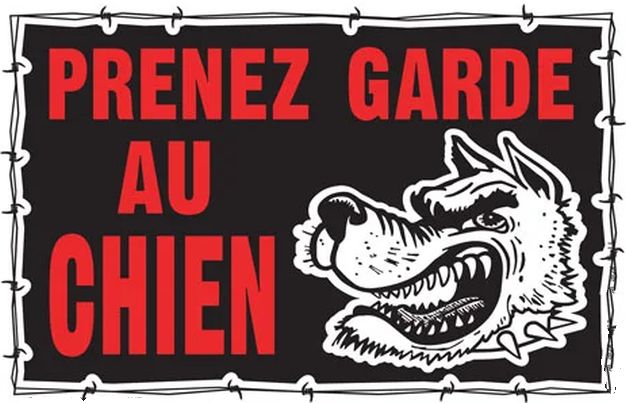 This story by Roald Dahl opens with a World War 2 fighter pilot trying to get his badly damaged plane back to England. As he muses about how stoically he will tell his ground crew that he has lost a leg, he is forced to bail out. He wakes up, his injuries already treated, in hospital. He is initially relieved to learn that he had landed in Brighton. However, over the next twenty-four hours, he gradually realizes that something is wrong. Themes: war casualties, courage, determination, deception (looks can be deceiving), duty.. More…
This story by Roald Dahl opens with a World War 2 fighter pilot trying to get his badly damaged plane back to England. As he muses about how stoically he will tell his ground crew that he has lost a leg, he is forced to bail out. He wakes up, his injuries already treated, in hospital. He is initially relieved to learn that he had landed in Brighton. However, over the next twenty-four hours, he gradually realizes that something is wrong. Themes: war casualties, courage, determination, deception (looks can be deceiving), duty.. More…